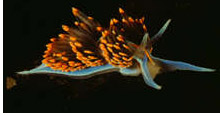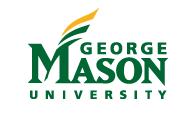News Archive: 2000
October 2000
New Perspective on Homology
Krasnow scientist Ann Butler and her colleague Bill Saidel (Rutgers University) have recently introduced a new perspective on homology-the concept that concerns the recognition of the same structures across different species and phyla. As David Wake [1994, Sci 265:268-269] has put it, homology is the "central concept for all of biology." Darwin's theory of evolution provided an explanation for homology, but since that time the criteria for homology have been a matter of debate. Phylogenetic homology has long been the most firmly established application, defining homologous characters in terms of descent from a common ancestor. Phylogenetic homology addresses the distribution of a character across a group of species. More recently Günter Wagner [1989, Evol 43: 1157-1171] introduced the concept of biological homology to address the mechanisms of character fixation and diversification over evolution. Butler and Saidel [2000, BioEssays 22: 846-853] have now identified the third and requisite aspect of homology-that of shared generative pathways during the developmental process (genes and their pathways of expression). Their new terms-syngeny, or generative homology, and its complementary term allogeny, or generative homoplasy-address whether the generative process for a character was inherited from a common ancestor, regardless of whether the character itself is consistently expressed. The three concepts now available-phylogenetic homology, biological homology, and generative homology-form a complete conceptual set and allow one to characterize all existing biological characters. This new perspective represents a crucial advance for dealing with the wealth of new data on shared generative pathways for the brain and other body parts across the entire animal kingdom.
September 7, 2000
Krasnow Fall Seminar Series Set
The schedule for the Krasnow Institute Fall Seminar Series is now in place and includes a world famous neuroscientist, Cal Tech's John Allman. The series additionally includes a talk from the Washington Post's own Joel Achebach and many of the Institute's own faculty. The series commences on Monday September 11, 2000 at 4PM in the Krasnow Institute's Seminar Room. Coffee and cookies preceed at 3:30PM.
July 2000
Krasnow Computational Neuroscientist Receives New Research
Award from NSF
 Krasnow
Computational Neuroscientist Kim (Avrama) Blackwell has received a new
research award from the National Science Foundation to study the cellular
basis of classical conditioning in the seaslug, Hermissenda crassicornis.
In Hermissenda, individual cells have been identified in which a change
in cell properties is correlated with a change in animal learning behavior.
Specifically, the type B class of photoreceptors shows an increase in
excitability consequent to classical conditioning with light and turbulence.
However, all the currents underlying the increase in excitability have
not been identified. Also, it is unclear how the interaction between type
A and type B photoreceptors bring about a change in animal behavior. Thus,
NSF has funded research to measure the light-induced currents, and quantify
their role in the change in type B photoreceptor excitability.
Krasnow
Computational Neuroscientist Kim (Avrama) Blackwell has received a new
research award from the National Science Foundation to study the cellular
basis of classical conditioning in the seaslug, Hermissenda crassicornis.
In Hermissenda, individual cells have been identified in which a change
in cell properties is correlated with a change in animal learning behavior.
Specifically, the type B class of photoreceptors shows an increase in
excitability consequent to classical conditioning with light and turbulence.
However, all the currents underlying the increase in excitability have
not been identified. Also, it is unclear how the interaction between type
A and type B photoreceptors bring about a change in animal behavior. Thus,
NSF has funded research to measure the light-induced currents, and quantify
their role in the change in type B photoreceptor excitability.
A second component of this interdisciplinary research is to develop a computer model of the network of all five photoreceptors in the eye. Model simulations will investigate how changes in type B photoreceptor properties changes the network interactions and leads to a change in animal behavior. This results of this research will contribute significantly to our understanding of how people learn because a change in cell excitability is thought to be a general mechanism of associative learning.
July 2000
Krasnow Researcher Investigates Cognitive Abilities
of Orangutans
 Krasnow
Institute and Smithsonian National Zoological Park researcher Rob Shumaker
coordinates the Orang utan Language Project taking place at Think Tank
at the National Zoo. The Project, which began in 1995, aims to assess
the language abilities of these great apes, and also to provide insight
into how they learn, understand, and perceive the world. The current two
subjects, Azy and Indah, are asked to respond to abstract symbols presented
on a computer screen during daily research sessions. Azy and Indah can
use symbols from 4 different categories: foods, objects, verbs, and numbers.
Krasnow
Institute and Smithsonian National Zoological Park researcher Rob Shumaker
coordinates the Orang utan Language Project taking place at Think Tank
at the National Zoo. The Project, which began in 1995, aims to assess
the language abilities of these great apes, and also to provide insight
into how they learn, understand, and perceive the world. The current two
subjects, Azy and Indah, are asked to respond to abstract symbols presented
on a computer screen during daily research sessions. Azy and Indah can
use symbols from 4 different categories: foods, objects, verbs, and numbers.
The Project currently focuses heavily on numbers and counting. One of the initial questions that has been explored deals with the ability of the apes to distinguish varying quantities, and to spontaneously develop a plan that allows them to communicate ideas about "less than" or "greater than" to the researcher. Initial findings have been provocative.
Rob Shumaker discusses the project at the first Krasnow Monday Seminar of the Fall 2000 series.
May 2000
Krasnow Institute Researchers Win Prestigious $210,000
Grant
The Krasnow Institute for Advanced Study and the department of physics and astronomy at George Mason University are recipients of a three-year, $210,000 grant from the Whitaker Foundation. The award, in support of biomedical engineering research, is the first from the Whitaker Foundation for both George Mason and the Krasnow Institute.
Funds will be used to lay a foundation for a novel neural prosthetics based on electric field modulation of brain network activity . One specific focus is to create implantable seizure control devices that reside within the brain.
The research will be led by Bruce Gluckman (Krasnow; Physics and Astronomy) in collaboration with Paul So (Krasnow; Physics and Astronomy) and Steven Schiff (Krasnow; Psychology).
According to institute director James Olds, "This research has the potential to change the lives of millions of Americans. It's a clear example of how basic research at the intersection of neurobiology and physics can translate into the doctor's clinic or medical intensive care unit."
Gluckman and his collaborators already have demonstrated the ability to modulate seizure activity using electric fields. Their efforts under this grant are to design the hardware and software needed to interact with networks locally and responsively.
" The techniques we are developing provide a means to interact with neuronal networks at length and time scales previously inaccessible through classical neurophysiological stimulation techniques," says Gluckman. "These developments will allow us to probe how brains function at the level of small- and intermediate-sized networks, as well as to control and, we believe, talk to them."
The Krasnow Institute for Advanced Study, located on the Fairfax Campus of George Mason University , is an independent research institution focused on interdisciplinary research at the intersection of neurobiology, computer science and cognitive psychology . The Whitaker Foundation is a nonprofit foundation dedicated to improving human health through the support of biomedical engineering. Since its inception in 1975, the foundation has awarded more than $525 million to colleges and universities for faculty research, graduate fellowships and program development.
May 2000
Institute Ends Academic Year on a High Note
The Krasnow Institute ended the 1999-2000 academic year on a high note with an NIH sponsored meeting on neuronal synchrony, a Whitaker Foundation grant, and a prestigious Department of Education grant. The Institute is now bringing in more than 10% of George Mason University's entire sponsored research portfolio with funding from agencies such as the National Institutes of Health and National Science Foundation among others. As a matter of note, the Institute is also celebrating the third anniversary of its residence in the Krasnow facility which continues to serve as a superb laboratory for the study of human cognition.
February 2000
Monday Seminars for Spring
The new calendar year has commenced at Krasnow with the Spring afternoon Krasnow Monday Seminar Series. The Institute has also recently received media coverage from PBS's "Think Tank", Virginia Public Radio's "With Good Reason" and Fox Television's Channel 5. Most importantly, the Institute's resesarch program continues to make significant strides in understanding the workings of the human mind.

